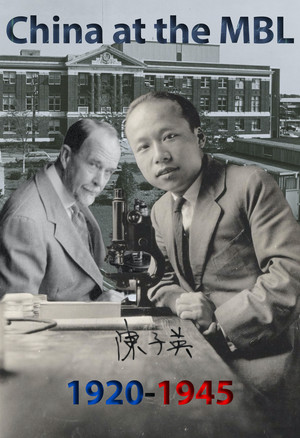- John Philip Trinkaus
- Early Life
- Trink’s Undergraduate Research at Wesleyan University
- Trink's First Visit to the MBL
- Trink and the MBL Embryology Course
- Trink's Graduate Research at Johns Hopkins University
- New Location & New Research Problem
- Fundulus as Choice Organism
- Trink's work on the Yolk Syncytial Layer (YSL) in Fundulus Epiboly
- Trink’s MBL Research on Cell Motility with C. A. Tickle
- Conclusion
- Alfred Huettner
- Cathy Norton
- China at the MBL: 1920-1945
- Collecting at the MBL
- Cyclins at the MBL
- Edmund Beecher Wilson
- Edwin Grant Conklin
- Envisioning the MBL: Whitman’s Efforts to Create an Independent Institution
- Eugene Bell Center for Regenerative Biology and Tissue Engineering 2010-2018
- Shinya Inoué: Capturing Dynamic Cellular Processes
- Squids, Axons, and Action Potentials: Stories of Neurobiological Discovery
- The Biological Bulletin
- The Ecosystems Center (1975-2018)
- The MBL Embryology Course 1939
- The Marine Biological Laboratory
- The Neurobiology of Vision at the MBL
- Using Biodiversity
- Collecting Methods & Surveys
- “Report upon the Invertebrate Animals of Vineyard Sound and Adjacent Waters, with an account of the Physical Features of the Reg
- “A Biological Survey of the Waters of Woods Hole and Vicinity. Part III. A Catalogue of the Marine Fauna” (1913)
- Methods for Obtaining and Handling Marine Eggs and Embryos (1957)
- Experiments
- Supply & Sale
- Collecting Methods & Surveys
- Viktor Hamburger and Experimental Embryology
- Visual Media in Embryology
- Woods Hole 150
During the 1920s, the MBL welcomed a continual stream of Chinese students studying genetics. This influx was, in large part, due to the influence of Thomas Hunt Morgan, the famed fly geneticist whose lab housed many students from China. Almost every summer of the 1920s, Morgan brought his family and tubes full of Drosophila melanogaster from the Columbia fly lab in New York to Woods Hole. Morgan found the atmosphere at the MBL stimulating, and encouraged his students to join him in Woods Hole. Morgan’s Chinese students who made the journey to Woods Hole reveled in the chance to expand their understanding of the biological sciences, as taught in the U.S. They carried their Woods Hole training and the connections that they made while at the MBL back with them as they returned to China, and used these experiences to shape early 20th century genetics there.

